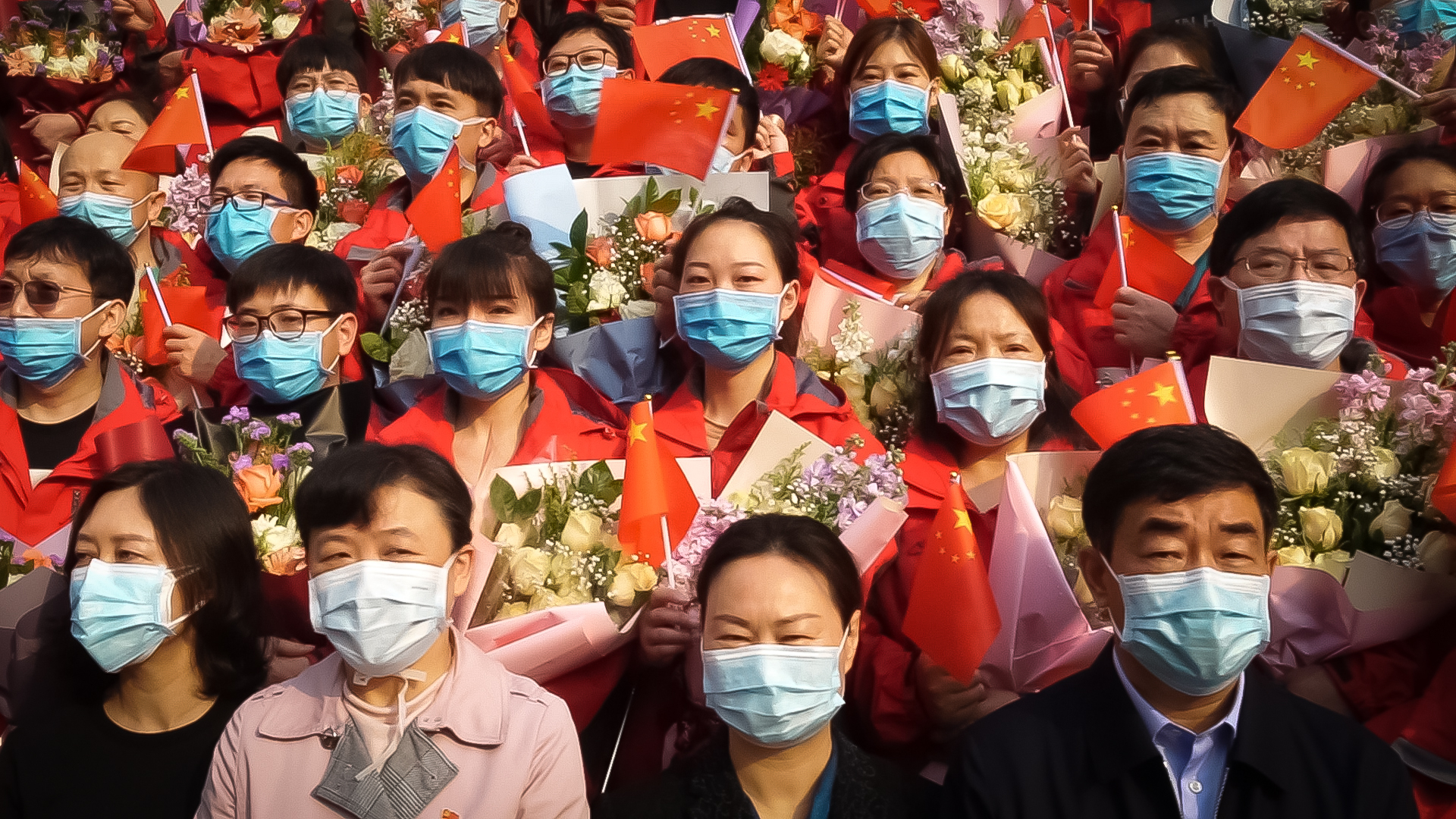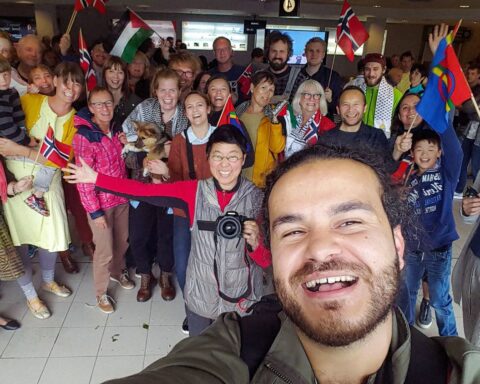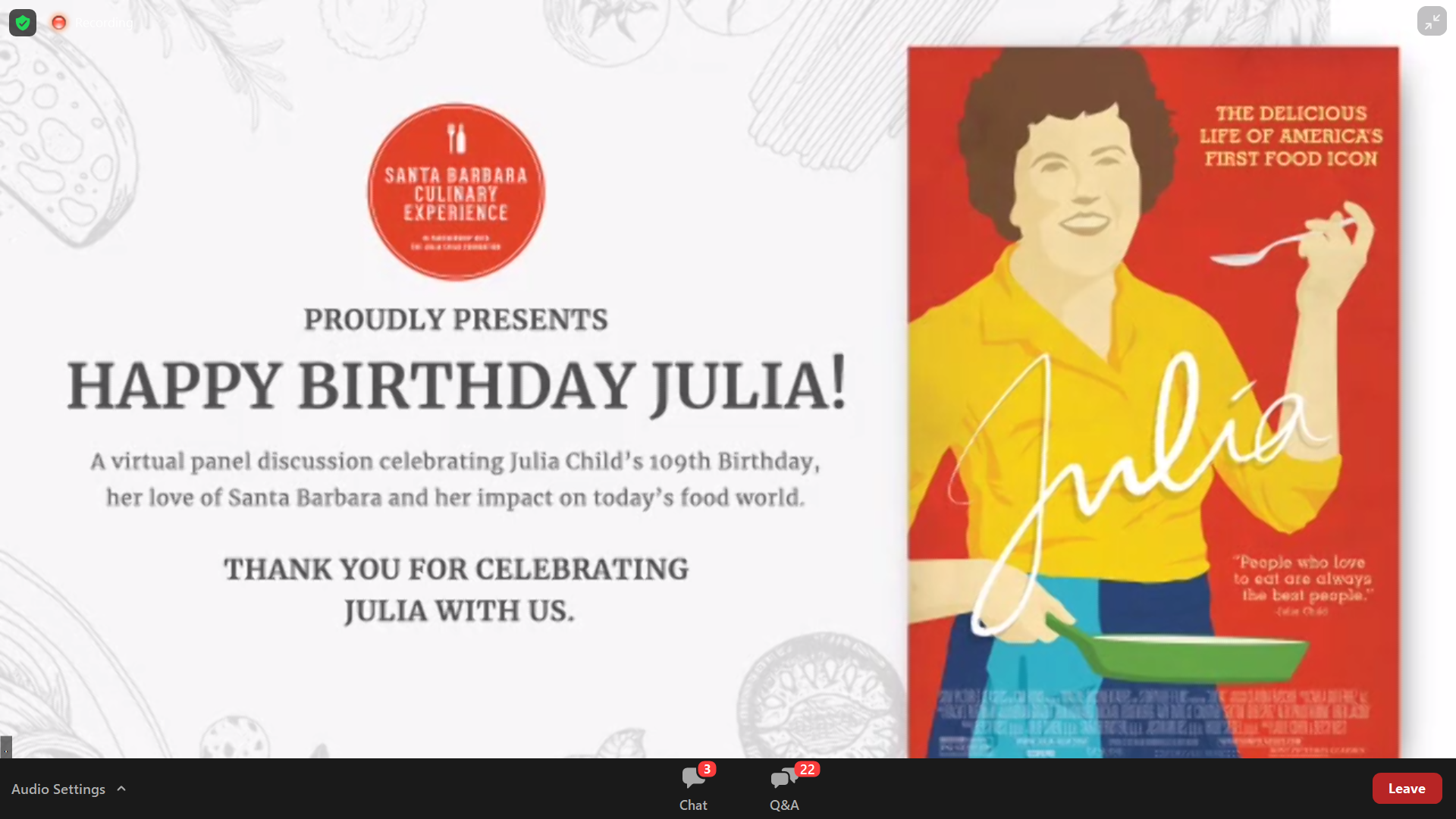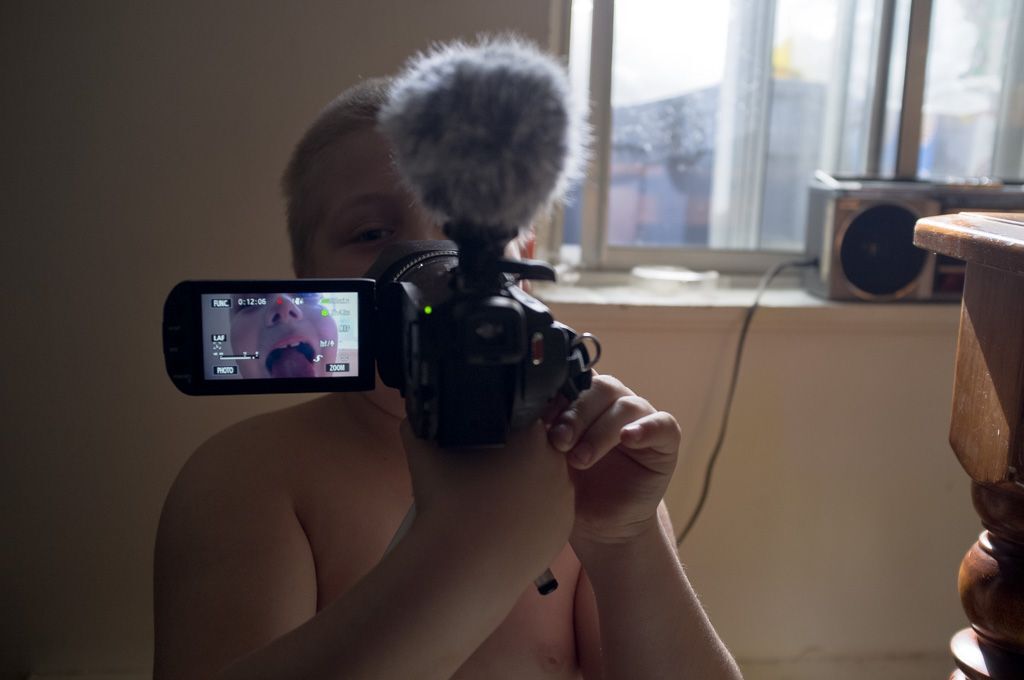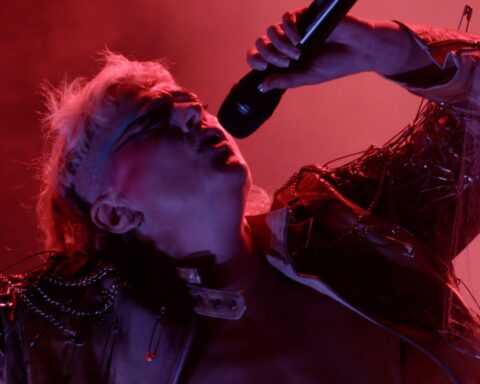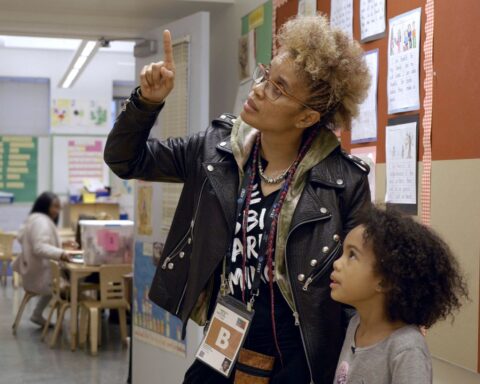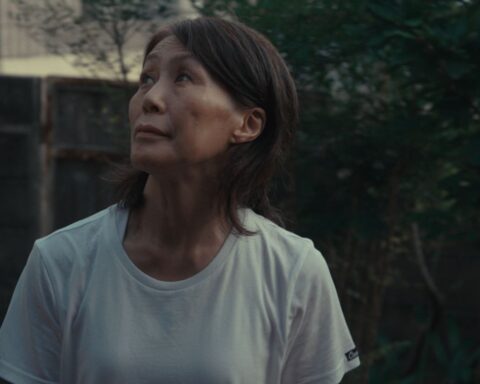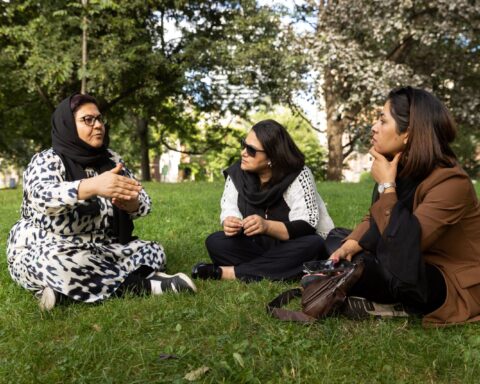Watching a COVID-19 documentary in the middle of a pandemic can be exhausting, but it can also be therapeutic. In the Same Breath daringly probes the implications of the pandemic from a personal perspective as director Nanfu Wang (One Child Nation) considers the superpowers that enabled COVID-19’s eruption in her native China and adopted home of the USA. The film, which debuts on Crave in Canada and HBO in the USA this week after an acclaimed premiere at the Sundance Film Festival, signals a shift in films to emerge from the pandemic. In the Same Breath examines the power structures that allowed the virus’s initial outbreak in Wuhan to explode into a global pandemic, as well as the mishandling of the situation in the USA for which the Chinese government’s corruption was merely an opening act. The film helps a viewer make sense of the traumatic year that’s passed, but also enlightens viewers about the lessons from 2020 and a world forever changed.
Despite the breakneck pace with which the COVID-19 pandemic story unfolded, especially once the Trump administration became involved, Wang says that it wasn’t a challenge keeping up with the news cycles. “Making the film wasn’t about trying to keep up with what’s happening,” explains Wang, speaking with POV by telephone. “I don’t see In the Same Breath as a film about the virus—it’s not like we were trying to track how many deaths there were, what the situation with the vaccines were, and where we are with COVID.” In the Same Breath considers life before and after COVID as Wang’s story begins with the 2020 New Year celebrations and news reports in which numerous anchors repeated the same line: “Eight people were arrested for spreading rumours about a rare case of pneumonia.” The line becomes the film’s mantra as Wang considers how easily the pandemic could have been prevented had the Chinese authorities listened to the whistleblowers instead of silencing them.
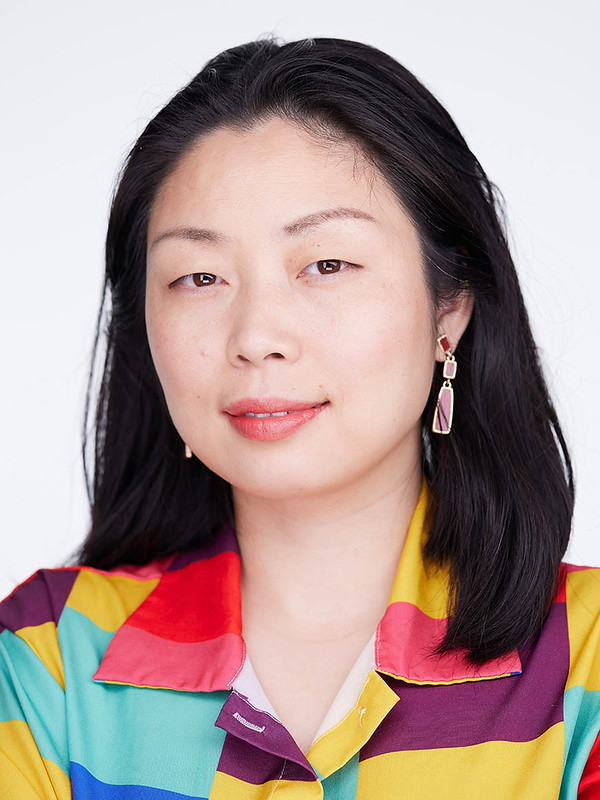
“The film that I wanted to make, and that I was compelled to make, was about the social issues and the problems explicit in our society, both in China and the US,” observes Wang. “Those issues existed before the pandemic, during the pandemic, and will continue existing after the pandemic. The main themes of the film are propaganda and censorship, lack of transparency and truth, and the lack of accountability of the power and authority.” COVID is merely a lens through which Wang explores these issues. As many commentators and filmmakers have noted since the outbreak, COVID merely made many of the inequalities in society too visible to ignore.
Chinese Censorship and Risks
Wang previously tackled the power of propaganda in One Child Nation — this critic’s pick for the best doc of 2019 — with a powerful study of China’s one-child policy. Similarly, her 2016 breakout Hooligan Sparrow examines the surveillance and state suppression faced by activist Ye Haiyan when she sought justice for six young women who were sexually assaulted by their school principle. Wang says that the thematic link between her work isn’t conscious, but agrees that’s easy to see her confrontation with Chinese censorship and surveillance as connective tissue between her docs. “Each of those films, I think, prepared me to make In the Same Breath,” observes Wang.
“One aspect of this [preparation] is that by making those films, I learned how to take precautions,” notes Wang. “Each film prepared to me to understand the censorship more and to understand the restrictions of filming in China, and in mitigating the risk for every collaborator who worked on the film.” Wang says that making One Child Nation marked the first time she really examined the effects that propaganda has on people—the film sees how her family members and neighbours internalised the government’s messaging and sense of duty. In the Same Breath similarly explores the devastating consequences that arise when people absorb misinformation uncritically.
A Global Story and Team
Capturing the story in both China and the USA during lockdowns means that In the Same Breath required the largest crew to date for Wang, who shot Hooligan Sparrow, One Child Nation, and I Am Another You (2017) herself. The film is a collaboration with over 20 cinematographers and producers working in China and the USA. Wang says the scope of the team was simply born from necessity and expanded as the situation escalated and as more teams were needed to film at different hospitals or locations. However, she finds the scale of the project appropriate for the scope of the film. “It’s the most global story that I’ve ever told,” notes Wang.
Moreover, Wang says that the size of her team allowed her to see how the pandemic and propaganda affected her collaborators differently. “As a director, I found it very liberating because I had so many cinematographers who each had a unique style,” says Wang. “Getting the footage from them and watching what they captured from their own point of view, sometimes different cinematographers would be sent to film the same event, and they came back with drastically different styles of footage.” When cinematographers would send Wang footage from their shoots, she could then adapt her plan and assign people to capture events that fit their styles and perspectives. The variety of viewpoints in the film coalesces as Wang reflects upon the images or acts that strike her crew as worthy, like a fifteen-minute shot of an ambulance crew navigating roadblocks, or early footage in which cinematographers are too deferential to censors at the hospital.
State Surveillance
Working with such a large team also drew upon Wang’s experience mitigating risks and navigating censorship in China. Three members of her team were interrogated by police with varying outcomes. Wang says that one participant had little experience in dealing with the police and left the project after they interrogated her. “She apologized for quitting and we certainly understood,” admits Wang. “We felt bad that she had a bad experience because she worked on the film.”
For a more seasoned activist on the team, however, Wang says the surveillance had the opposite effect. “She told us that she not only didn’t get intimidated by that experience, she was really skilful and then fully embraced documentary filmmaking,” explains Wang. “Before she worked on this project, she was more of an activist than a filmmaker. Now she has learned how to use cameras, she’s travelling, and doing more of the film work. Everybody has taken a different path.”
However, Wang notes that those encounters with police happened during production. Following the film’s Sundance premiere, though, Wang says the authorities turned their attention to her family. “My family over the past few months has received a lot of harassment and interrogation,” explains Wang. “My close family members in different areas were questioned by the local police. Some of my family members had to turn in their history of web chats with me to the police. It’s very unfortunate, and it was not completely surprising, but it was a painful experience for both my family and myself. It’s still unknown to me and my family what will happen after the wide release on HBO because that was simply a reaction back Sundance premiere.”
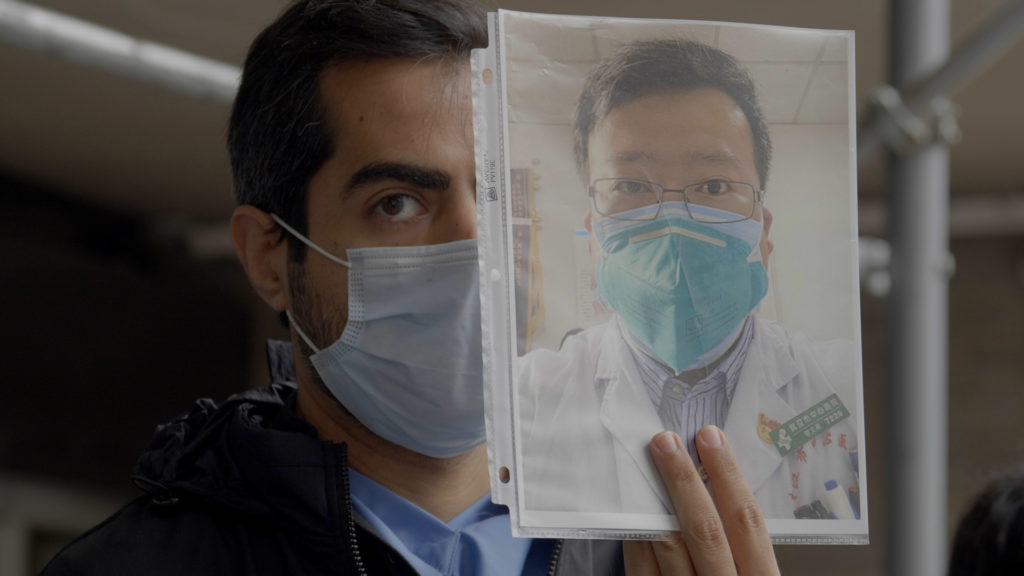
Although Wang doesn’t know what her next project will be and if it will take her to China, she says that making films about her native country is becoming increasingly difficult as she and her work gain an international profile. “The restrictions of documentary filmmaking and the censorship and the surveillance towards me are getting tighter with each film I make,” notes Wang. “In the Same Breath is the hardest film to make makes in that sense. I know that if I could go back to China, I can only imagine that everywhere I go will have a higher level of surveillance than in the past.”
Censorship, of course, was not unique to China. Wang says that her teams encountered restrictions in the USA as well. “The health care workers that I interviewed all spoke to the censorship within the hospitals, within the management, and whether where that comes from an individual hospital,” says Wang. “It happened across the country. They experienced the same things that the doctors in China experienced when they tried to sound the alarm. They will silenced, and the consequence was being fired from their jobs.”
The Return to “Normal”
A key difference that distinguishes In the Same Breath from Wang’s other films, however, is that it deals with an event as it unfolds. The film observes the way propaganda mutates and becomes more dangerous than the virus it aims to shield. “Since January, when the outbreak started in China until December or January this year, I witnessed how the Chinese government is writing its COVID history,” observes Wang.
“I could foresee how it will be written in the history books,” adds Wang. “What they’re writing is not the reality that I knew or the reality that most people in China experienced.” In the Same Breath climaxes with the New Year’s Eve celebrations in Wuhan that make the first days of 2021 look almost identical to the beginning of 2020. Wang observes as the government reverts almost immediately to upbeat and positive messages of triumph and goodwill, putting on a nice smile to encourage Chinese citizens that the virus has been defeated even though it continues to take its toll. “It is the same thing in the US,” adds Wang. “We all have seen where the government is going to write their books of what had happened. It is certainly not the version each us experienced.”
As the film sees the people of Wuhan ring in 2021, Wang speculates that the first waves of the COVID-19 pandemic are merely setting the stage for new levels authoritarianism worldwide. In the Same Breath stresses the danger in embracing the return to “normal” that the government presents. “If you ask anybody, they would say ‘normal’ means prior to January 2020 or, in the US prior, to March 2020,” says Wang.
However, Wang says the message of the film is whether the people should want to return to a world where misinformation, corruption, censorship, and authoritarianism are the norm. “That’s why I said this film is not about COVID,” notes Wang. “Look at all the issues that existed last year, and all the issues that were exposed through the pandemic that existed before March 2020. Going back, it’s is as if we failed if we say that is the world we want to live in and that we don’t want any changes. Then, I think we’re not learning much from 2020 at all.”
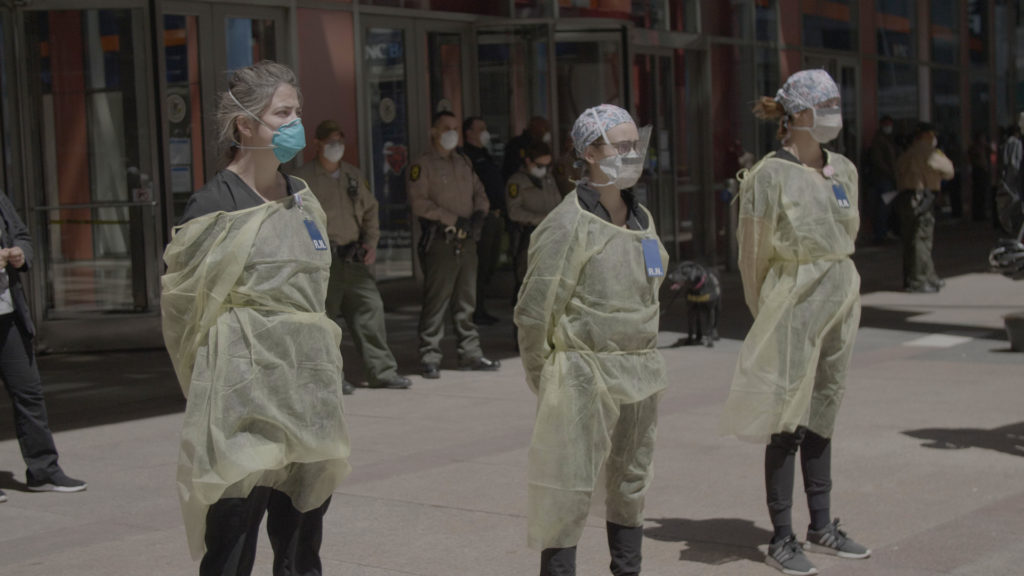
Storytelling vs. Propaganda
While sharing the stories of ordinary people whose lives are effected by censorship and propaganda, Wang inevitably has to navigate documentary’s own potential to become propaganda. Pushing an agenda too overtly or too sharply could invite the same questions that she raises. “That’s unfortunately part of the reality,” says Wang on balancing propaganda versus storytelling. “There is a fine line between that and, with the world we currently live in, it’s hard to convince people what isn’t propaganda because it has similar components, which are emotional storytelling and influencing people by moving them.”
Wang says she witnessed the interplay between storytelling and propaganda by observing the messaging that emerged in China throughout in 202. “It’s great storytelling and it is very intimate, very personal, very emotional, yet it doesn’t examine any bit,” says Wang. The film notes how China harnessed the power of heroic health care workers and front line workers to further the party line. Her interviews with front line workers exhibiting symptoms of PTSD tell a different story. “Two major differences between storytelling and propaganda are whether they allow people to think critically and ask questions, and whether it distorts facts or omits certain facts to show a partial reality or a filtered reality.”
For In the Same Breath, the story unfolded as Wang began jury duty at the 2020 Sundance Film Festival and took up a challenge with fellow doc makers to capture the pandemic from its early stages. Her point of view is clear from the outset. “From January, I knew that I would be telling the story through a first person narrative because the story originated from my own experience,” explains Wang. “I have a strong emotional connection and investment, and strong point of view of the issue. One sees and experiences the pandemic, or experiences other things in the world, through one’s own point of view. I hope that the final result will resonate with people who share similar fears.”
In the Same Breath premieres on Crave and HBO on August 18.




